How to do a squat – because we're doing them all wrong, say personal trainers
It starts with having the right shoes
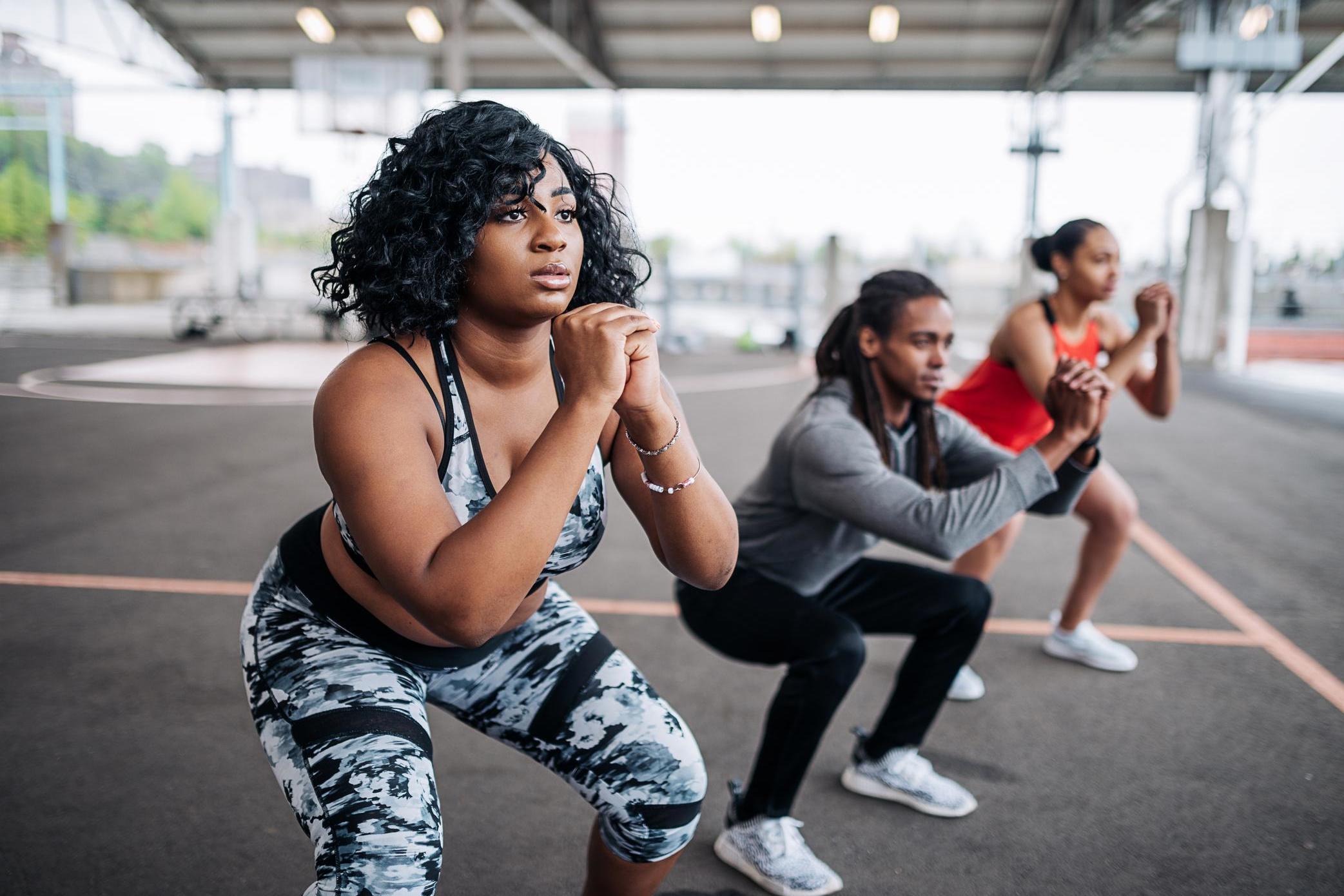
Your support helps us to tell the story
From reproductive rights to climate change to Big Tech, The Independent is on the ground when the story is developing. Whether it's investigating the financials of Elon Musk's pro-Trump PAC or producing our latest documentary, 'The A Word', which shines a light on the American women fighting for reproductive rights, we know how important it is to parse out the facts from the messaging.
At such a critical moment in US history, we need reporters on the ground. Your donation allows us to keep sending journalists to speak to both sides of the story.
The Independent is trusted by Americans across the entire political spectrum. And unlike many other quality news outlets, we choose not to lock Americans out of our reporting and analysis with paywalls. We believe quality journalism should be available to everyone, paid for by those who can afford it.
Your support makes all the difference.It’s one of the most effective exercises around, and yet, fitness professionals say most of us aren’t squatting correctly.
Squats are praised by personal trainers for burning fat, increasing flexibility, and building strength in your lower body.
Of course, all of that is rendered obsolete if you’re not doing them properly, which can lead to injury.
There are several variations of a squat that will work different muscles, some of which include weights, but it’s key to get the hang of the most basic one first, which just uses your bodyweight.
From what shoes to wear to how low to drop down, learn to master your squat form with The Independent’s step-by-step guide, complete with tips from some of the best PTs in the business.
Make sure you have the right shoes on
A good squat begins before you’ve even started moving. In fact, it starts with what shoes you’re wearing, explains elite performance specialist Luke Worthington, who advises wearing sturdy and supportive trainers for squatting.
“A firm sole is far preferred than an air sole or a running shoe,” he explains. This means you’ll be able to drive your heels into the floor properly and will give you a more impactful squat.
Ensure you’re standing properly
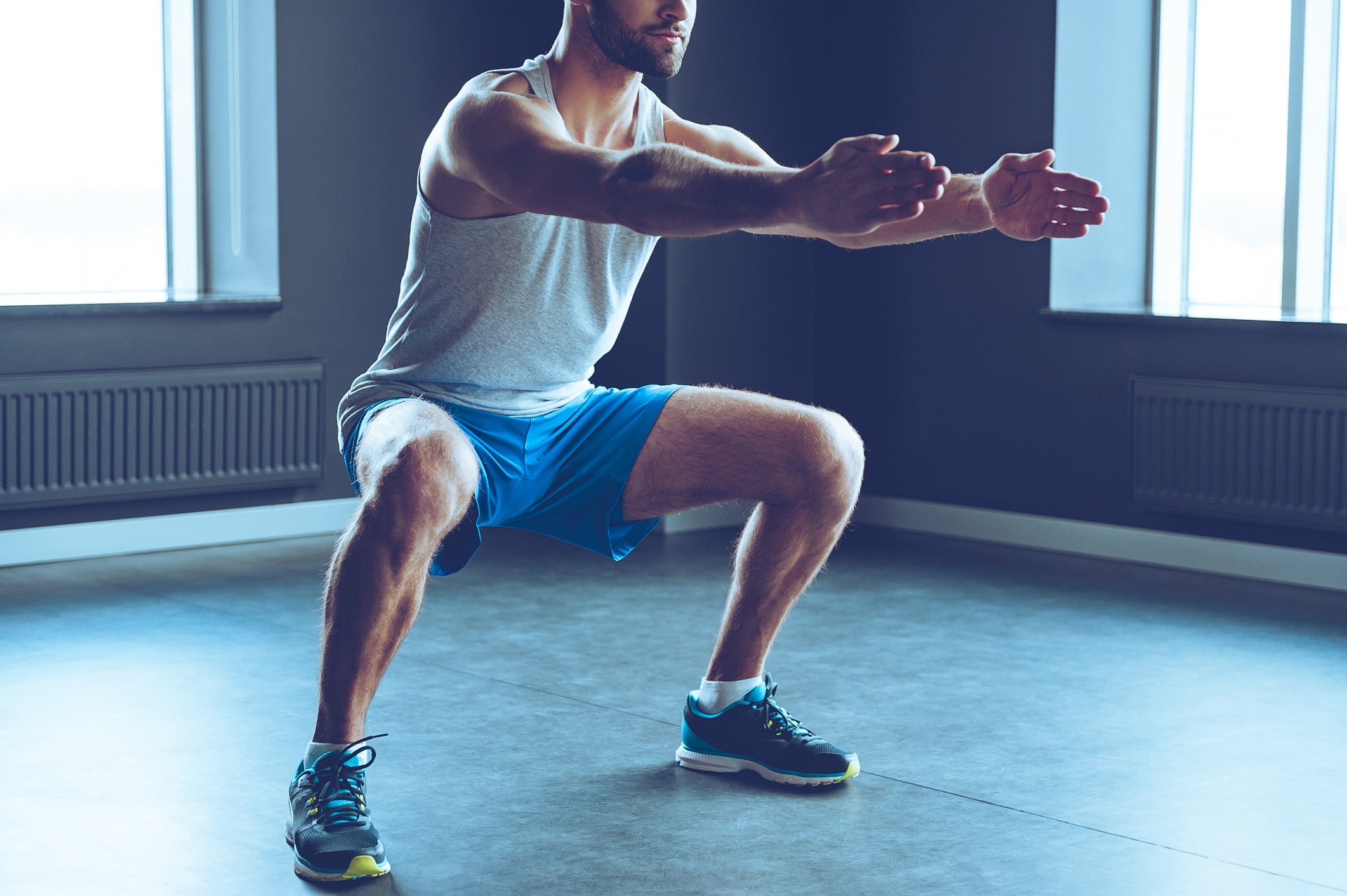
You need to engage your entire body when you’re squatting because a good squat should be a full-body exercise, explains master trainer at Barry’s Bootcamp, Alex Castro.
This means you have to stand a certain way. “Feet facing forward and shoulder-width apart,” Castro tells The Independent.
“This may vary depending on your height (and your mobility) but it is the right place to start,” he adds.
Personal trainer and fitness influencer Zanna van Dijk, who is an ambassador for Balance Festival, suggests also pointing your toes slightly outwards so that when you do eventually drop down into the squat, you won’t risk putting too much pressure on your knees.
Ensure your body weight is in the right place
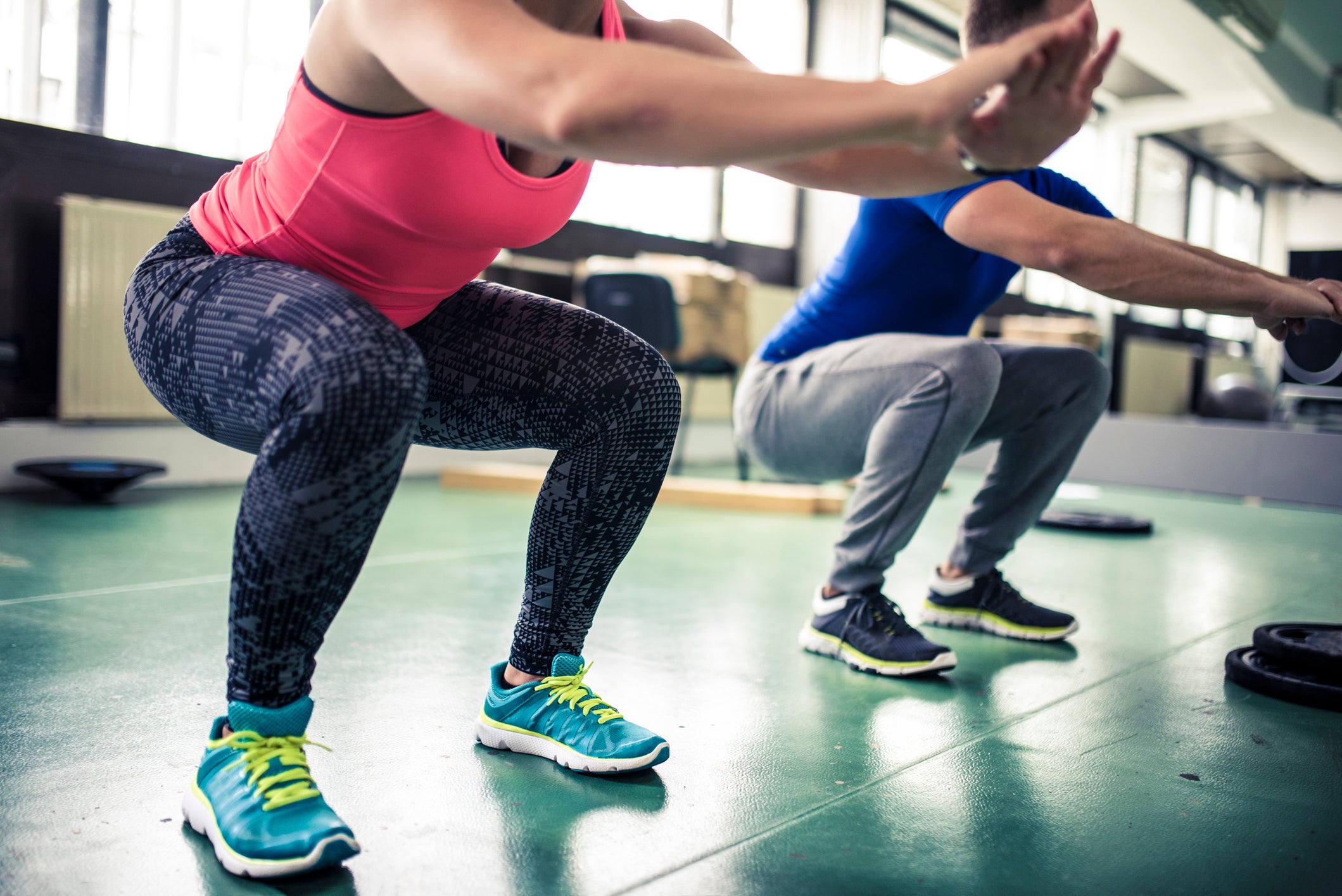
When you’re preparing for a squat, it can be tempting to lean forward to feel as if you need to do this to stabilise yourself. In fact, this may have the opposite effect, so as HIIT instructor at Another_Space, Vitor Fernandes, explains, it’s best to keep your full body weight on your heels. This will ensure you can drive down powerfully without tipping over, which could be a tad embarrassing.
Tuck your bum underneath you too, adds Worthington, “this will create a neutral spine and a zone of apposition through the midsection and ribcage.”
Squatting down
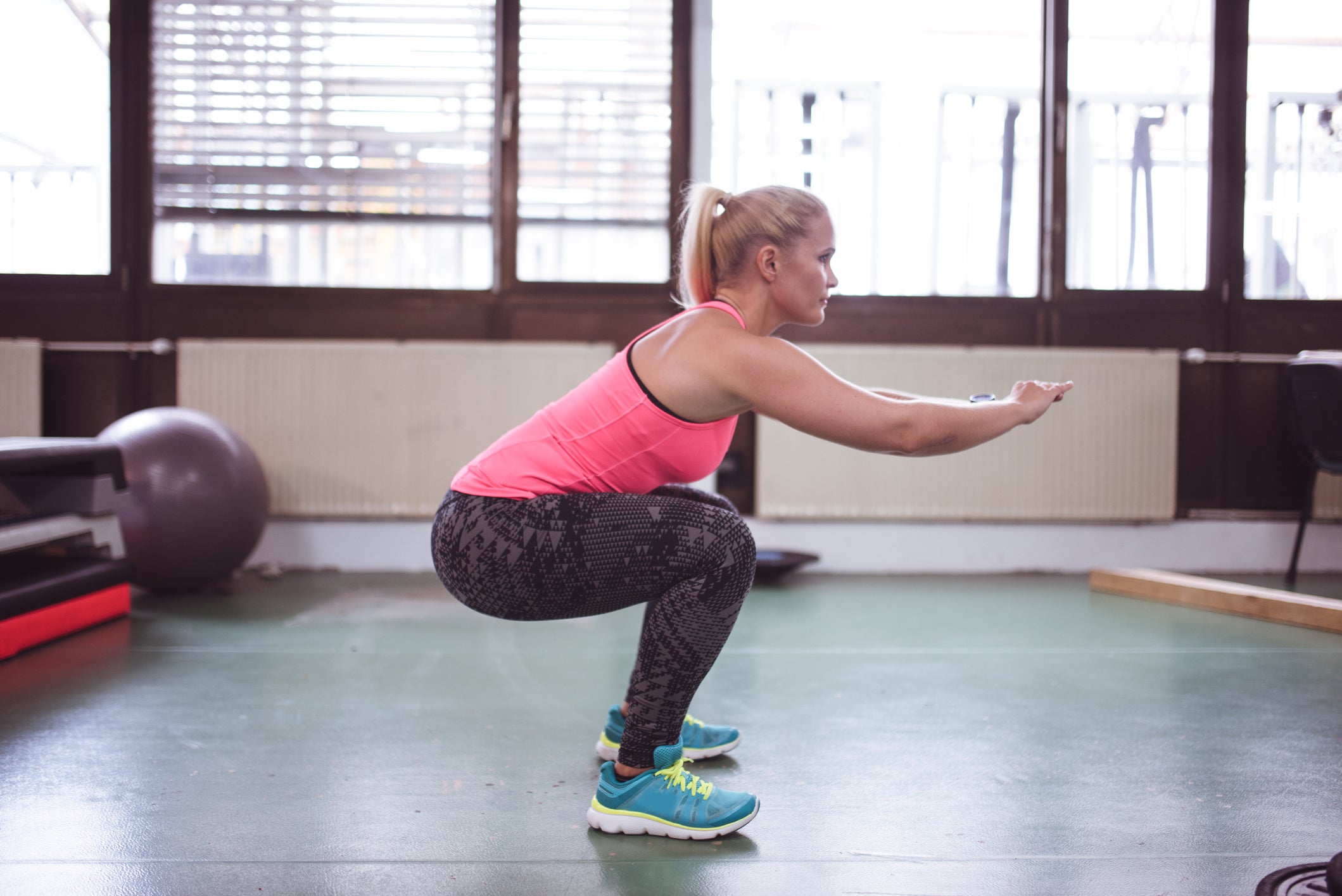
Now the pain begins. Before beginning your squat, take a deep breath, says Worthington.
“Descend into the squat initiating it by sitting your bum backwards,” he explains.
“Rather than collapsing beneath the weight think about activity pulling yourself down.”
Castro suggests thinking of it like sitting down on a low bench.
“Keep your shoulders back and down, chest out,” he adds. “And look in front of you, or look at a slight angle higher than where your natural eyeline would rest so that you can force your upper body to stay upright throughout the squat.”
Make sure your knees are tracking out
“Keep your knees tracking wider than your heels as you go down,” explains Worthington.
“This is very important. If your knees start buckling inwards, you lose the activation of your glutes (backside muscles), which is a key body part that the squat engages and strengthens.”
How low should you go?
“Only go as deep as you can keeping good form,” says van Dijk.
“Look in a mirror as you do it and see if your back stays straight. As soon as it starts to curve, stop at that depth, push up through your heels and come to standing.”
Coming up from the squat
This is just as important as going down, explains Worthington. If you’re performing a basic squat, you should come back up almost immediately after having gone down.
“Drive the feet hard into the floor,” Worthington adds. “As you ascend, exhale hard through the mouth, this will cause the ribcage to remain pulled down and help tuck the tailbone. Maintain the parallel lines between shin and torso.”
Then, once you’re upright and in the “finish” position, he adds, “the glutes and abs should be firmly engaged and you should still feel as though you are working hard and maintaining full body tension”.
How many reps should you do?
Depending on how experienced you are, van Dijk suggests repeating your squat between 10 and 15 times.
How often should you do it?
Start with two to three times a week and then increase it from there, advises Castro.
When should you start introducing weights?
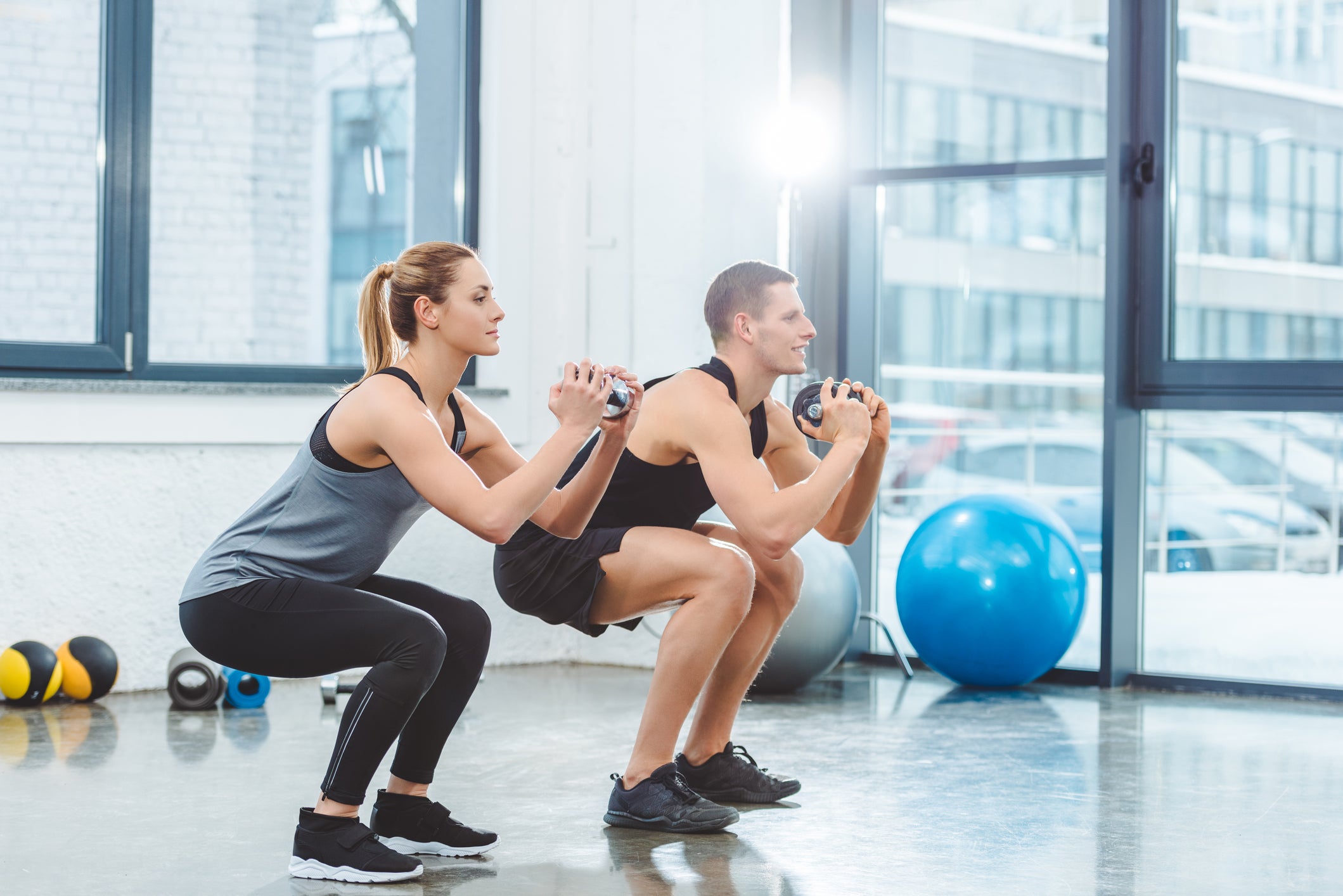
If you’re starting to get a little bored of your squats, you can up the ante by introducing weights. But only do this once you’ve mastered your basic form – you might want to ask a trainer in your gym to check this for you.
“Weighted squats have many benefits, from building leg strength to challenging your core,” explains van Dijk, “but don’t rush into them. Start small and incrementally increase the load you put your body under. Check your own form in a mirror or even better, have a trainer check it.”
To start with, Fernandes advises getting a weight you can lift for at least 12 reps.
Join our commenting forum
Join thought-provoking conversations, follow other Independent readers and see their replies
Comments